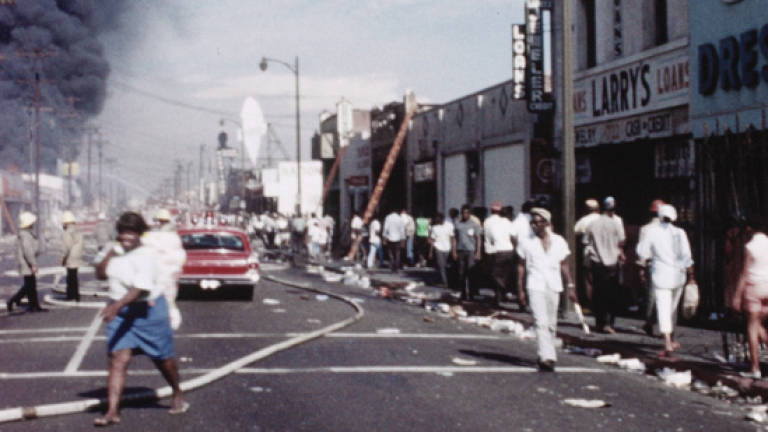Filmmakers see hope - and paralysis - 25 years after LA riots

LATE in the afternoon of April 29, 1992, the looting began in south Los Angeles, quickly escalating as motorists were dragged from their cars and vehicles set alight.
In the downtown area a few miles away, an angry crowd began to build at the city police headquarters and, as day turned to night, protesters attacked uniformed officers and blocked traffic.
The fuse had been lit by the acquittal earlier in the day of four white police officers filmed beating black motorist Rodney King with wooden batons.
For six days, America's second city was engulfed in fireball of rage in front of the world's news cameras as decades of pent-up anger exploded into some of the worst riots in US history. More than 50 people died and 2,000 were wounded.
The not-guilty verdict for use of excessive force was a breaking point in relations between the city's African American communities and the Los Angeles Police Department, opening fissures which for many have never healed.
As LA was ripped apart by crowds who looted businesses, destroyed hundreds of buildings, causing around US$1 billion (RM4.4 billion) damage, and attacked one another, King made a personal plea for peace.
"People, I just want to say, you know, can we all get along? Can we get along?" he asked on the third day of rioting.
Police brutality
A documentary, Let It Fall, which opened theatrically in Los Angeles and New York on Friday, is among a number of films timed to mark the 25th anniversary of the riots.
Written and directed by John Ridley, who won an Oscar for his screenplay of 12 Years a Slave (2013), it offers first-hand testimony from black, white, Asian, and Hispanic Angelinos of all classes caught up in the violence.
If a suspect resisted, "you beat him," retired detective Robert Simpach tells Ridley, remembering the interrogation techniques used by the LAPD in the early 1990s.
"If he doesn't do what you told him, then incapacitate him by breaking a bone or a joint," he adds.
Simpach, who was present as King was beaten but was not one of the four officers involved, says his colleagues' behavior was "100% LAPD policy."
Ridley, who moved to LA a year before the riots, shows the violence as the almost inevitable culmination of a decade of heightening racial tensions, gang wars, drug crime and police brutality.
"With a white man, their attitude is enforcing the law. With a black man, it's about control: 'Put your hands on the steering wheel, don't move until I tell you,'" retired fireman Donald Jones says in the two-hour film, due to air on ABC on April 28.
Other documentaries looking at the LA riots include L.A. Burning, co-produced for the A&E channel with Boyz n the Hood director John Singleton, and Showtime's Burn Motherf****r Burn, both of which recently had their premieres and are available through video on demand.
Still victimized
On the narrative front, Kings, a romance starring Daniel Craig and Halle Berry which is due for release later in the year, is set amid the civil unrest while Gook, by Justin Chon, focuses on tensions between African Americans and Korean traders.
After several lawsuits, King ended up with US$3.8 million (RM16.72 million) in damages from the Los Angeles authorities. But he was dogged by depression and nightmares, and in 2012 was found dead in a swimming pool after taking a cocktail of alcohol and drugs. He was 47.
"Twenty-five years ago footage like the Rodney King beating was very rare. Now unfortunately people see these incidents happen with regularity," says Ridley.
One of the main reasons is the ubiquity of cellphones with video cameras, which didn't exist then, rather than the situation worsening. Indeed, Ridley acknowledges that there have been "positive changes" in the LAPD since the riots.
But these films serve as a reminder that, a quarter century after the riots, relations between law enforcement officers and ethnic minorities, the militarization of police and the use of force remain hugely divisive issues across the United States.
L.A. Burning ends on images of the 2014-2015 Ferguson riots which followed the death of Michael Brown, an unarmed black teenager killed by white policemen, and unrest in Baltimore after the 2015 death in police custody of 25-year-old Freddie Gray.
"There are still issues. They're complicated, they're beyond race," Ridley told AFP.
"You look at Baltimore. You see people of color represented in uniform and still people being victimized. These are complicated issues." — AFP